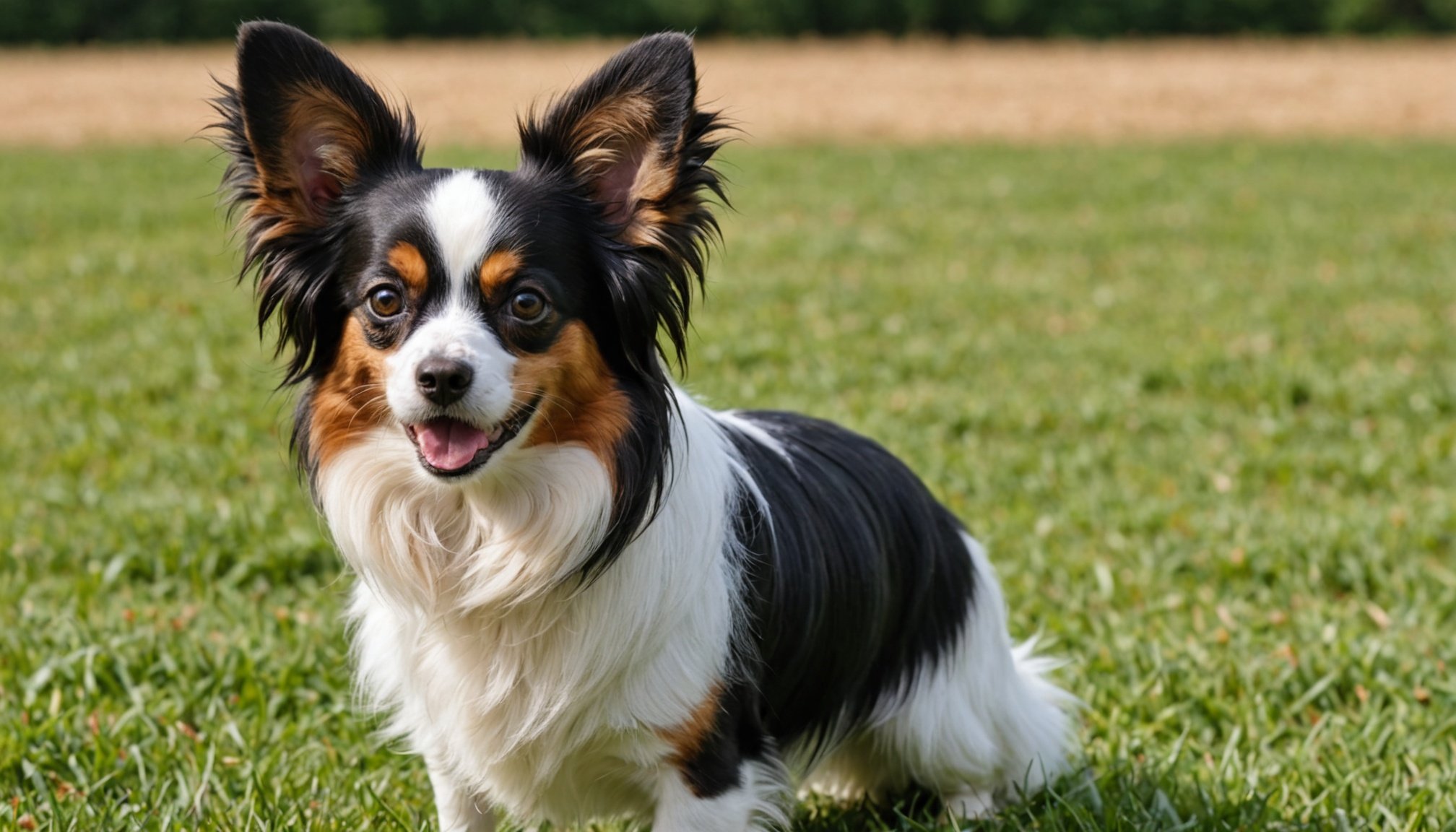Unlocking the Secrets of Scent Training: Your Ultimate Guide to Competing with Your Papillon
Why Scent Training is Perfect for Your Papillon
Scent training, often associated with larger, more robust dog breeds, is an activity that can be incredibly rewarding for any dog, including the elegant and intelligent Papillon. This small dog breed, known for its stunning butterfly-shaped ears and affectionate nature, is more than just a pretty face; it is also highly trainable and eager to please.
Papillons, with their historical background as companion dogs, thrive on interaction and mental stimulation. Scent training provides an excellent way to engage your Papillon’s mind and nose, making it an ideal activity for this breed.
Have you seen this : Early indicators of hip dysplasia in young labrador retrievers: what every owner should know
Understanding Your Papillon’s Capabilities
Before diving into scent training, it’s essential to understand the capabilities and characteristics of your Papillon.
Intelligence and Trainability
Papillons are among the smartest small dog breeds. They are known for their intelligence, attentiveness, and desire to please their owners, making them highly trainable[1].
Also read : What are the potential hazards in my home that I need to eliminate to keep my dog safe?
Physical Attributes
Despite their small size, Papillons are agile and have a keen sense of smell, which is crucial for scent training. Their compact size also makes them versatile, allowing them to navigate various environments with ease.
Temperament
Papillons are friendly, outgoing, and love human interaction. This temperament makes them excellent candidates for activities that involve close bonding with their owners, such as scent training.
Getting Started with Scent Training
Scent training involves teaching your dog to identify and follow specific scents, which can be a fun and challenging activity for both you and your Papillon.
Choosing the Right Scent
When starting scent training, you need to choose a scent that your dog can easily identify and distinguish from other smells. Common scents used in scent training include essential oils like birch, anise, and clove. You can purchase these scents in the form of perfume or fragrance oils specifically designed for dog training.
| Scent | Description | Suitability for Beginners |
|---|---|---|
| Birch | Strong, distinct smell; often used as a starting scent | Excellent |
| Anise | Sweet, licorice-like smell; can be less overwhelming for dogs | Good |
| Clove | Pungent, spicy smell; may be too strong for some dogs | Fair |
Preparing Your Training Area
Ensure your training area is free from distractions and has minimal background smells that could confuse your dog. Start in a controlled environment, such as your home, before moving to more complex outdoor settings.
Step-by-Step Guide to Scent Training Your Papillon to the Scent
- Introduce the Scent: Place a few drops of the chosen scent on a cotton swab or a piece of cloth. Let your Papillon sniff the swab or cloth to become familiar with the scent.
- Associate with Rewards: Immediately reward your dog with treats and praise when they show interest in the scent. This positive reinforcement helps your dog associate the scent with good things.
Hiding the Scent
- Start with Simple Hides: Hide the scented swab or cloth in plain sight, encouraging your dog to find it. Gradually increase the difficulty by hiding it in harder-to-reach places.
- Use Verbal Cues: Introduce verbal cues like “find it” or “search” to signal to your dog that it’s time to start searching for the scent.
Advanced Training
- Increase Difficulty: Once your dog is comfortable finding the scent in various locations, you can increase the difficulty by adding more complex hides, such as hiding the scent in boxes or under objects.
- Introduce Distractions: Gradually introduce distractions like other people, dogs, and noises to simulate real-world scenarios.
Tips and Tricks for Successful Scent Training
Consistency is Key
- Regular Sessions: Conduct training sessions regularly to keep your dog engaged and to reinforce what they have learned.
- Positive Reinforcement: Always reward your dog with treats, praise, and affection when they successfully find the scent.
Make it Fun
- Keep it Engaging: Vary the locations and difficulty levels to keep the training sessions interesting and challenging.
- Use High-Value Rewards: Use high-value treats and praise to motivate your dog, especially during the initial stages of training.
Be Patient
- Learning Curve: Every dog learns at a different pace. Be patient and do not rush the training process.
- Celebrate Small Wins: Celebrate small victories along the way to keep both you and your dog motivated.
Competing in Scent Trials with Your Papillon
Once your Papillon has mastered the basics of scent training, you can consider competing in scent trials. Here’s what you need to know:
Understanding Scent Trials
- Format: Scent trials typically involve hiding the scent in various locations, and the dog must find all the hides within a set time limit.
- Judging: Dogs are judged on their speed, accuracy, and overall performance.
Preparing for Competition
- Practice Under Pressure: Practice training sessions in environments that mimic the competition setting to help your dog get used to the pressure.
- Build Endurance: Ensure your dog is physically and mentally prepared for the demands of a competition.
Breed Information and Scent Training
While Papillons are naturally adept at scent training, here are some general tips that apply to other breeds as well:
Best Breeds for Scent Training
- Poodles: Known for their intelligence and trainability, Poodles excel in scent training[1].
- Border Collies: With their high intelligence and strong work ethic, Border Collies are also excellent candidates[1].
- Labrador Retrievers: Labradors, with their strong sense of smell and eagerness to please, are another popular breed for scent training[1].
Common Challenges
- Small Breeds: Small breeds like Papillons may face challenges due to their size, but their intelligence and eagerness to please can overcome these obstacles.
- Large Breeds: Larger breeds may have an advantage in terms of physical ability but require careful handling to ensure they do not become too dominant.
Resources and Tools for Scent Training
Books and Guides
- “The Scent and Scentability” by Anne Lill Kvam: This book provides a comprehensive guide to scent training, including tips and techniques for various breeds.
- AKC S.T.A.R. Puppy Program: While not exclusively focused on scent training, this program offers valuable insights into puppy training and socialization, which can be beneficial for scent training[3].
Online Courses and Communities
- Train Pet Dog: Offers a range of training courses, including scent training tips and advice on how to handle different breeds[2].
- Reddit Communities: Joining dog training communities on Reddit can provide valuable insights and tips from experienced trainers.
Scent training with your Papillon is a rewarding and engaging activity that can strengthen your bond and provide mental and physical stimulation for your dog. With patience, consistency, and positive reinforcement, you can unlock your Papillon’s full potential and enjoy the romance of this unique and challenging sport.
As user @klm122333 shared on Reddit, “I cannot describe fully how adorable they are. He was easy to train and picked up on things super quickly,” highlighting the ease with which Papillons can learn and adapt to new activities like scent training[1].
So, take the time to learn, practice, and enjoy this journey with your best friend. With the right approach, you and your Papillon can make scent training a fun and successful adventure that brings joy and fulfillment to both of you.











